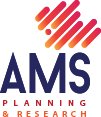Case Study: Business & Operations Planning – Leadership Structure
Carnegie Mellon University School of Drama
The Challenge
Carnegie Mellon University School of Drama
The Challenge
Our Approach
Interviews conducted across the School of Drama faculty and staff
Respondents to a digital survey for key stakeholders
Workshops facilitated with the leadership team
Not-for-profit theatre leadership structures analyzed
Interviews conducted across the School of Drama faculty and staff
Respondents to a digital survey for key stakeholders
Workshops facilitated with the leadership team
Not-for-profit theatre leadership structures analyzed
AMS examined CMU’s leadership structure, policies, and practices, engaged in community listening to understand diverse stakeholder perspectives, and leveraged industry knowledge. Based on this information, AMS provided a future-ready leadership model that transformed the school and paved the way for co-leadership models at other performing arts facilities.
Engage Diverse Perspectives
- Listened to faculty, staff, and key stakeholders via confidential interviews.
- Conducted 17 interviews across the School of Drama faculty and staff.
- Managed a digital survey for key stakeholders with 65 respondents.
- Facilitated three workshops with the leadership team.
Engage Diverse Perspectives
- Listened to faculty, staff, and key stakeholders via confidential interviews.
- Conducted 17 interviews across the School of Drama faculty and staff.
- Managed a digital survey for key stakeholders with 65 respondents.
- Facilitated three workshops with the leadership team.
Understand the Industry
- Analyzed 400+ not-for-profit theaters’ leadership structures and discovered that the traditional model for arts leadership required an innovative approach to keep up with the changing industry.
- Researched and developed our original research paper examining the drivers and implications of co-leadership as an alternative to the hierarchical leadership model.
- Leveraged findings from AMS’s theater industry roundtable, a regular discussion group of leaders from 10 of the largest-producing theaters in the US, and added insights on equity, diversity, inclusion and accessibility (EDIA) commitments, the evolution of management styles, and changing workplace norms.
Understand the Industry
- Analyzed 400+ not-for-profit theaters’ leadership structures and discovered that the traditional model for arts leadership required an innovative approach to keep up with the changing industry.
- Researched and developed our original research paper examining the drivers and implications of co-leadership as an alternative to the hierarchical leadership model.
- Leveraged findings from AMS’s theater industry roundtable, a regular discussion group of leaders from 10 of the largest-producing theaters in the US, and added insights on equity, diversity, inclusion and accessibility (EDIA) commitments, the evolution of management styles, and changing workplace norms.

Our Solution
AMS developed a menu of leadership structures to guide incoming School of Drama Chairperson.
Research revealed that faculty and staff preferred a shared leadership structure, reducing the burden of a single leader to accept direct reports while maximizing support for a complex educational unit.
AMS developed a menu of leadership structures to guide incoming School of Drama Chairperson.
Research revealed that faculty and staff preferred a shared leadership structure, reducing the burden of a single leader to accept direct reports while maximizing support for a complex educational unit.
What is the leadership model in your organization? More importantly, what should it be? Or are you beginning to search for your organization’s next leader? It is important to look at your structure, future goals, and purpose, and determine what needs to change going forward.
Contact AMS to learn how our knowledge base and our team can help you get on the right path to answer these critical questions.
© Copyright 2023 by AMS Planning & Research


